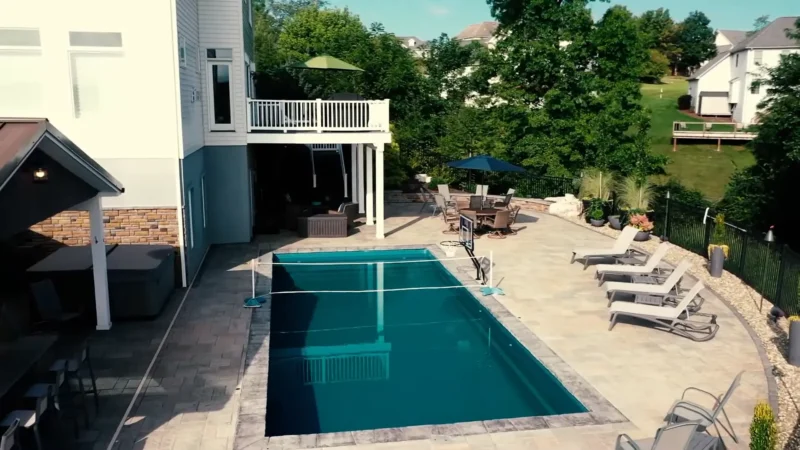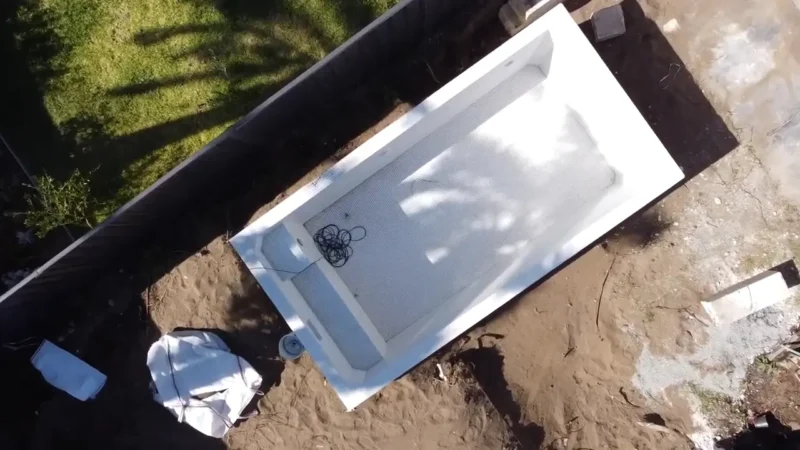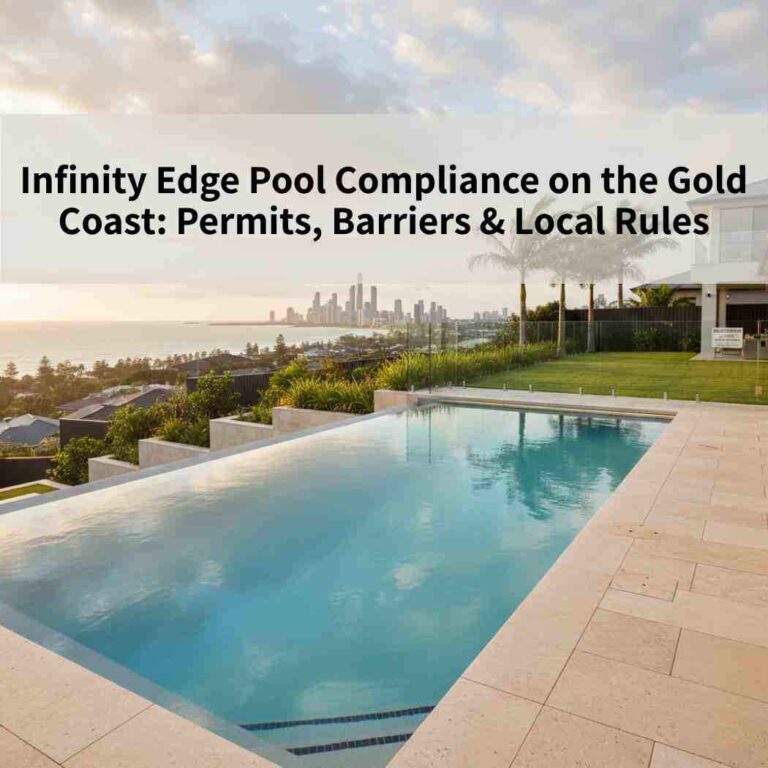Choosing a plunge pool for your backyard is an exciting decision, and many people in Australia are weighing the options between fibreglass and precast concrete plunge pools. Both types offer unique benefits and features that can enhance your outdoor space, but understanding their differences will help you make the best choice for your needs.
As experts in the pool industry, Plunge Pools Gold Coast understands the importance of making informed decisions when it comes to investing in a plunge pool. Our insights are based on extensive research and experience in the field. We aim to provide you with unbiased information that will help you navigate through the various options available.
In this article, we will explore the key aspects of fibreglass and precast plunge pools, including their installation processes, durability, maintenance requirements, cost comparisons, aesthetics, and suitability for various spaces. By the end, you’ll have a clearer understanding of fibreglass VS precast plunge pools and how to choose the perfect pool for your home.
Table of Contents
ToggleIntroduction to the Fibreglass and Precast Pools
Plunge pools are a fantastic way to enjoy swimming in smaller spaces while adding value to your property. They are designed for relaxation and cooling off rather than extensive swimming. When considering fibreglass VS precast plunge pools, it’s essential to understand what makes each type unique.
Fibreglass Pool
Fibreglass pools are pre-manufactured using a composite material made from glass fibres and resin. This construction method results in a smooth, non-porous surface that is easy to maintain. Fibreglass pools typically come in various shapes and sizes, allowing for flexibility in design.

Some key features of fibreglass pools include:
- Quick Installation: Fibreglass pools can often be installed within a few weeks.
- Durability: With proper care, these pools can last over 25 years.
- Low Maintenance: Their smooth surface reduces algae growth and requires fewer chemicals.
- Energy Efficiency: Fibreglass acts as an insulator, helping to retain heat.
Precast Concrete Pool
Precast concrete pools are constructed off-site using high-quality concrete. These pools are then transported to your location for installation. The use of concrete allows for more customisation in terms of shape and design compared to fibreglass options. Key features of precast concrete pools include:
- Durability: Concrete is robust and can withstand various weather conditions.
- Longevity: While they may require resurfacing every 10 to 15 years, they can last decades with proper care.
- Aesthetic Variety: You can choose from various finishes like tiles or plaster.
Important Aspects of Plunge Pools
When deciding between an inground pool and other pool types, one important factor to consider is the material used in construction. Many homeowners opt to choose a fibreglass pool for its smooth surface and low maintenance requirements, making it a popular choice alongside traditional concrete and fibreglass options.
Additionally, both materials allow for various pool design features, enabling you to customise your backyard oasis to suit your personal style and needs.
Swimming Pool Installation Time Process
The installation process between fibreglass and precast concrete pools is very similar.
- Excavation: The area is excavated based on the pool’s dimensions.
- Delivery: A crane is often used to lift the pre-manufactured pool shell into place.
- Setting Up: The pool is levelled and connected to plumbing systems.
- Finishing Touches: Surrounding landscaping or decking is added.
Durability and Longevity
Both fibreglass and precast concrete plunge pools are durable but have different lifespans depending on maintenance.
- Fibreglass Pools: With a gel coat surface that resists scratches and UV damage, these pools can last 25 years or more with proper care.
- Precast Concrete Pools: While extremely strong, they may last for more than 30 years with proper care.
Shape and Size Options
When it comes to shape and size options, both types of pools offer flexibility but differ in customisation capabilities.
Fibreglass Pools
Fibreglass pools come in standard shapes such as rectangular, oval, or freeform designs. However, they may have limitations on width due to transportation restrictions (typically around 4.2m).
Precast Concrete Pools
Precast concrete allows for greater customisation as they can be designed in almost any shape or size you desire. This means you can create a perfect pool that fits your specific backyard layout.
Maintenance and Upkeep
Maintenance requirements vary significantly between fibreglass and precast concrete plunge pools.
Fibreglass Pool Maintenance
Fibreglass pools typically require:
- Regular cleaning with less frequent scrubbing due to their smooth surface.
- Fewer chemicals needed for water balance since they resist algae growth better than concrete surfaces.
- Occasional checks on water chemistry to ensure optimal conditions.
Precast Concrete Pool Maintenance
Concrete pools usually require:
- Regular brushing to prevent algae growth on textured surfaces.
- More frequent chemical balancing due to their porous nature.
- Resurfacing every decade or so depending on wear from chemicals or weather exposure.
Aesthetics and Customisation
Aesthetics play an essential role in choosing the right pool for your backyard.
Fibreglass Pools
While fibreglass offers some colour options, it may not provide as much design flexibility as concrete. However, many modern fibreglass designs include built-in features like swim-outs or lounges that enhance usability.
Precast Concrete Pools
Precast concrete excels in customisation options. You can choose from various finishes such as exposed aggregate or tiles that suit your style preferences perfectly. This allows you greater freedom when designing your backyard oasis. Check out: Integration of landscape design to precast concrete pools.

Choosing the Right Option for Different Spaces
When selecting between fibreglass VS precast plunge pools, consider the space available in your yard.
Fibreglass Pools
Due to their lightweight nature, fibreglass pools can be installed even in areas with limited access. They’re also ideal for smaller backyards where space is at a premium.
Precast Concrete Pools
As long as there’s space to place a crane and lift the concrete pool into your backyard from the street, there shouldn’t be an issue regarding space. Precast pools accommodate most yards and is the perfect solution for compact spaces.
Conclusion
In summary, both fibreglass and precast concrete plunge pools offer unique advantages that cater to different preferences and needs.
Choosing between these two popular types involves considering factors such as installation processes, durability, maintenance requirements, cost comparisons, aesthetics, customisation options, and suitability for your specific backyard space
Ultimately, whether you decide on a fibreglass or precast concrete option will depend on what aligns best with your lifestyle preferences, budget constraints, and design aspirations for your outdoor area.
Now that you have all this information about fibreglass VS precast plunge pools, take some time to evaluate your backyard space carefully! Consider what features matter most to you before reaching out to our qualified installers who can provide quotes tailored specifically for your project.
People Also Ask
Why are plunge pools becoming popular in Australia?
Plunge pools are gaining popularity due to their compact size which suits smaller backyards while still providing a refreshing place to cool off during hot Australian summers. They offer an affordable alternative compared with larger swimming pools while maintaining aesthetic appeal.
What customisation options are available?
Both fibreglass and precast concrete plunge pools offer customisation options ranging from colour choices (for fibreglass) to unique shapes (for concrete). You can also add features like lighting or spa jets depending on your preferences!
What maintenance is required for precast concrete plunge pools?
Precast concrete plunge pools typically require regular cleaning (to prevent algae growth), chemical balancing (due to their porous nature), and resurfacing every 10–15 years depending on wear from chemicals or environmental factors.
How do fibreglass swimming pools perform in different climates?
Fibreglass swimming pools perform well across various climates thanks largely due its gel coat surface which helps retain heat while resisting UV damage; however proper maintenance remains essential regardless of climate conditions!
What shapes and sizes are available for fibreglass plunge pools?
Fibreglass plunge pools come primarily in standard shapes like rectangular or oval but may have limitations regarding width due transport restrictions—usually around 4.2m wide—making them suitable even for smaller yards!




